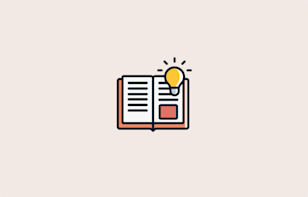Savings Calculator: How Much Do I Need to Retire in Germany?
Want to know how much you need to save for a financially secure retirement and whether you can retire earlier? Our calculator will show you!Updated on 7 November 2025

When it comes to retirement planning, there's one question on everyone's mind: How much do I need to save to enjoy a comfortable, financially secure retirement? This calculator will show you how much you need to save each month to get the extra retirement income you want. We also show what it will take to retire early. One key finding that applies to all of us is: The older you get and the higher inflation, the more you need to save, but the biggest difference you can make is investing well at low cost.
Let's calculate how much you need to save for a financially worry-free retirement
The Results
You will need to accumulate 192.175 € in assets (assuming 0 % inflation) by the age of 67 to have an additional net monthly income of about 1.000 € on top of your public pension in Germany.
If you want your pension to grow at 2 % per year to offset inflation, you will need to accumulate a total of 399.856 € in assets by the age of 67. In principle, that requires a monthly contribution of 185 €. But this does depend very much on whether you invest well. For tax purposes, we assume your income in retirement is 50.000 €. You can see in the tax table further down how taxation changes with income.
Note #1: Current life expectancy for a 67-year-old¹
Biological gender | High school / Vocational | College-educated |
|---|---|---|
Men | 82 | 88 |
Women | 85 | 91 |
¹ Every decade, life expectancy grows by about 1 year. So add 3 years to the above if you are now 37 years old.
Note #2: Inflation increases the income you need in retirement
Years | For the current value of 1.000 €, with 2 % inflation² you will need |
|---|---|
In 10 years | 1.219 € |
In 20 years | 1.486 € |
In 30 years | 1.811 € |
In 40 years | 2.208 € |
² 2 % inflation is the target of the European Central Bank. The average inflation in Germany from 2000-2022 was 1,6 % based on OECD data.
The clever way to invest and retire in Germany
Secure your retirement with Pensionfriend's flexible and tax-efficient pension plan
Retiring early or later
The amount you need will depend very much on your target retirement age. If you retire at 70, you need to accumulate a total of 369.553 € in assets, assuming you indeed also want your income to keep up with inflation of 2 %. If you instead want to retire early at 64, you need to accumulate 428.211 €, which is in assets. From a savings perspective, early retirement is quite intense: you will have to accumulate a more significant savings amount over a shorter period of time. But let's first focus on the most critical aspect, which is how much you have to accumulate for a pension and the quality of your investment choice.
The impact of the portfolio and (high) cost
Your retirement age | 67 |
|---|---|
For a monthly extra pension of | 2.081 € |
An asset target of | 399.856 € |
Monthly savings needed if you choose: | |
Pensionfriend Pension Plan Global Outperformance (expected return of 8,05 %, cost of 0,49 % — 0,69 % depending on the size) | 185 € |
Extra monthly investment needed if you choose: | |
Pensionfriend Pension Plan but invested in the MSCI World index (expected return is 6 %, cost of 0,49 % — 0,69 % depending on the size) | 308 € |
A private pension plan at the cost of the largest German insurance company and invested in the MSCI World index | 364 € |
A private pension plan invested with a guaranteed product like Invest Select from the largest German insurance company, potentially benefiting from the value increases in the European STOXX 50 index. | 812 € |
The low cost makes quite a difference, and a good portfolio even more. At Pensionfriend, we pride ourselves in our selection methodology for creating the best portfolio: the indices with the highest likely returns over the long run and the ETFs replicating those indices at the lowest cost or highest surpluses. And we have done our very best to keep costs low and flexible. No upfront cost means our goals are aligned with our clients: to earn you the highest pension in a credible and likely way.
Tax table: The taxation of your pension plan's pension depends on your income
Income | Capital gains that are taxed³ | Average income tax rate | The effective, one-off tax rate on the gains |
|---|---|---|---|
80.000 € | 42,5 % | 30,09 % | 12,79 % |
60.000 € | 42,5 % | 26,06 % | 11,08 % |
50.000 € | 42,5 % | 22,15 % | 9,41 % |
40.000 € | 42,5 % | 19,03 % | 8,09 % |
30.000 € | 42,5 % | 15,07 % | 6,40 % |
³ 15 % of capital gains are not taxed at any time, and if held over 12 years and taken after the age of 62, another 50 % is not taxed, i.e., (1-15 %)×(1-50 %) = 42,5 %. If you take an annuity, the tax rate is typically lower if you take it at an older age.
Use our investment calculator to compare the returns of investing directly in ETFs versus investing in a private pension plan.
How to leverage your assets
The standard solution is to use your accumulated assets to buy an annuity or fixed monthly or other periodic income at retirement from a life insurance company. This is costly, as the next table illustrates, you need about ⅔ (yes, a whopping 66,6 %!) more assets compared to continuing investing.
The main reasons are that
insurance companies barely invest your annuity assets in stocks and, therefore, only obtain a very low return. As we tend to live about 20 years in retirement these days, that makes a very big difference;
insurance companies build massive buffers in case you grow especially old;
they charge high costs, and
the customers using the insurance companies for an annuity have, on average, much higher life expectancies, making it a costly group to insure.
The assets you need for your extra income per month
Your retirement age | 60 | 64 | 67 | 70 |
|---|---|---|---|---|
Assets needed if you keep investing⁴ | 462.448 € | 428.211 € | 399.856 € | 369.553 € |
Monthly PPP contribution needed (keep investing) | 371 € | 250 € | 185 € | 137 € |
Assets needed if you buy an immediate annuity⁴ | 1.057.057 € | 1.019.598 € | 994.885 € | 982.798 € |
Monthly PPP contribution needed (immediate annuity) | 848 € | 596 € | 461 € | 363 € |
⁴ The so-called “Rentenfaktor” determines how much your monthly annuity will be. It changes with your age. For the age of 60, it is 20, for the age of 64 it is 22, and for the age of 70, it is 26. This is because payments need to be spread over a different period. For self-investment, we used an effective pension that is ⅔ higher for each age bracket.
Our recommended alternative is to keep investing in stocks, start with a modest pension--⅔ better than what the insurance company offers, and then each year your assets grow; you pay yourself a 2 % inflation adjustment. Only in a few cases do you need to resort to a life insurance company later in life. In our back test of these scenarios over 150 years, then we see that only when retiring at the start of the Great Depression would the retiree have gotten into trouble if they had strictly followed these rules. Before the Great Depression, we had the Roaring Twenties, and stocks were at first rather inflated and then dropped sharply. The solution is to reduce your pension to the level an insurance company would pay you when there is such a deep crisis on the one hand and, on the other hand, be modest in your pension payout if your portfolio has increased 60 % in the 2 years before retirement. This continued investment approach would also lead to an average inheritance (after cost and after taxes) of 117 % of the money you started with when retiring. Yes, 117 % at the age of 92, which is 5 years longer than the average life expectancy. This means that you have ample cushion for other risks that occur on your path as well.
In other words: You will have a better pension and can pass your assets to your heirs. Of course, the more dependent you are on this income, the less risk you can take. For example, owning your home or having a basic Public Pension creates a strong basic floor that allows you to take more risks.
Finally, keep in mind that working an extra year or even having the ability to work part-time during your many retirement years is your biggest risk buffer. When you work one year more, you save a year more, while you don't take out any money. So keep healthy and enjoy your work!
Join one of our webinars or use our advanced retirement calculator to understand even more.


